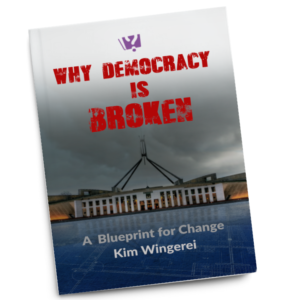The ‘bush telegraph’ is the colloquial term for how information is informally transmitted around the rural and outback regions of Australia. It is also an appropriate description of how Australia’s telecommunications infrastructure has not kept up to date with the needs of our modern digitally networked society.
The latest episode of this saga sees TPG and Optus in the middle of a dispute being considered by the ACCC over the best way to enable better mobile services for Australia’s regional consumers. TPG has done a network sharing deal with Telstra which would give their customers better network service in regional areas.
Optus believes that will be bad for consumers in the long run because Optus says it will exit the market. The ACCC must decide whether a duopoly of Telstra and TPG is better than today’s Telstra regional mobile monopoly – but with the possibility, Optus may after many decades step up and compete more in the future. The ACCC must decide whether to take ‘the bird in the hand’ or rely on a promise from Optus that may be on the ‘never never’.
Lack of a long-term plan for regional telecommunications investment
But this is just the latest in many ongoing dramas over Australia’s bush telegraph.
There have been serial reviews by various government inquiries over the decades into Australia’s regional telecommunications but little serious action in building a long-term framework that ensures the necessary ongoing investments necessary for the 21st century.
The most recent of the triennial reviews (mandated by legislation) was published in the last few days of the Morrison Government in February 2022. The review highlighted many of the same old issues that have bedevilled regional telecommunications since the privatisation of Telstra – a ‘patchwork quilt’ of connectivity, reliability problems and a lack of resilience in the face of natural disasters.
The committee’s report titled ‘A Step Change in Demand’ puts the problems down to a ‘step change in the ongoing demand for data’ and advocates for a corresponding ‘step change in the policies and programs which support the delivery of telecommunications services in the bush’.
This position serves to highlight all that has been wrong with Australia’s regional telecommunications policy approach. The blame is put on some unexpected event – in this case, a ‘step change’ increase in demand for data. But the demand for data across Australia has been growing consistently at rates between 25% and 35% per annum since 2006. Demand growth at this rate (effectively doubling every 2.5 years) requires significant ongoing investment in network upgrades.
Rather than creating an environment for the ongoing necessary investment ahead of demand, we have added various government initiatives that have reacted to complaints – such as Telstra’s CountryWide division, large investments by NBN Co in Fixed Wireless and Satellite and more recently the Mobile Blackspots program funding for mobile operators.
In general, we have had a series of reactionary politically driven programs that have responded to complaints but provided no plan for ongoing, sustainable, investment ahead of demand in the necessary infrastructure.
Given this lack of foresight and planning to manage the inevitable growth in demand it is little wonder that no proactive initiatives have been taken to tackle some of the harder issues such as overall network resiliency and tolerance to the increasing incidence of natural disasters.
Productivity Commission weighs in on the ‘bush telegraph’
The Productivity Commission, in a recently released interim report on Australia’s Data and Data Dividend, has weighed in on this repetitive process of complaining, contemplating, considering and then finally constructing.
The commission acknowledges that a diverse range of fixed, mobile and satellite technologies need to be considered to effectively and efficiently provide fixed and mobile services to regional Australia.
These technologies are evolving rapidly with private sector providers (Starlink, Telstra, ViaSat, OneWeb and HyperOne) investing alongside government programs such as the NBN, Regional Blackspots and the Regional Connectivity Program.
The commission laments the limited quality and adequacy of the data that, if available, would highlight the ‘geographic disparities in the demand and supply options for regional telecommunication services. Data from work by Infrastructure Australia released in March 2022 highlighted that 23 of Australia’s 48 regions have broadband and mobile infrastructure gaps. But better, more granular data is needed.

Figure 1 – Regions with broadband and mobile connectivity infrastructure gaps, 2022a
Source : Infrastructure Australia (2022)
A lack of transparency around NBN funding for its regional networks is also of concern. The commission highlights that the $480 million granted to NBN Co in the 2022 Budget for NBN fixed wireless upgrades lacked important clarity concerning connection types and locations that are necessary ‘to ensure taxpayer funds are being spent efficiently. The grant is also on top of the government equity and mixture of private and government debt that NBN Co has previously used for its funding. It may be a sign of future funding for NBN Co being brought onto the Federal Government’s budget accounts rather than its previous off-budget accounting methods.
The Productivity Commission is considering a recommendation for a market-based mechanism for funding a Universal Service Guarantee tender mechanism to ‘improve access to low-cost, reliable, future-proofed internet services in regional and remote parts of Australia’. This policy has been used successfully in Canada, which has similar geographic challenges for telecommunication, for many years.
Such an approach, if it were combined with a regular funding arrangement and comprehensive geographic modelling of the demand and supply gaps in regional telecommunication services, would go a long way to ensuring Australia rectified its ‘bush telegraph’ problem.
Need for long-term secure funding arrangement
Any such funding arrangement would need to re-direct the likely ongoing funding NBN Co will require to the market-based mechanism. Extra funding should also come from expanding the levy scheme currently imposed on non-NBN fixed network operators (who are charged approximately $7 per month per fixed broadband service under the Regional Broadband Levy Scheme) to encompass all telecommunications services (fixed and mobile) such that all services were levied on a percentage basis using retail prices.
A retail levy of 2.5% would raise approximately $1 billion per year – sufficient to keep ahead of the ongoing growth in demand and enable upgrades in the overall quality and resiliency of the network.
For too long Australia’s ‘bush telegraph’ has suffered from the lack of a proactive plan that ensures ongoing investment in areas that will always need some form of taxpayer assistance. Governments have preferred to leverage their ownership of, initially, the Post Master General’s Department, then Telecom Australia / Telstra and now NBN Co to hide these costs and use these ‘government agencies’ as scapegoats when the inevitable complaints from lack of investment roll in.
The result has been a lack of ongoing, sustainable investment in regional telecommunications and instead a focus on committing capital (in many cases provided by taxpayers) to Australia’s metropolitan areas where the returns are higher and more secure.
Australia’s NBN is the latest example of this approach. Taxpayers are on the hook for $57 billion of investment with a real chance of much of this being written off in the near future. Any such write-off will be a tragedy for the ‘bush telegraph’ as it will likely well and truly exceed the capital invested by NBN Co in regional areas and hence highlight the failure of the hidden cross-subsidy approach within NBN Co.
A market-based approach, as advocated by the Productivity Commission, that requires private and public companies to compete for taxpayer funds and where their investments are transparently tracked and monitored, can ensure that Australia’s important regional and remote telecommunications services are kept at a level that matches those of their metropolitan cousins.
Hopefully, the Productivity Commission’s recommendations in this area will be considered seriously by the new regime in Canberra.
The post TPG and Optus fight just the latest drama over Australia’s bush telegraph appeared first on Gary McLaren.


